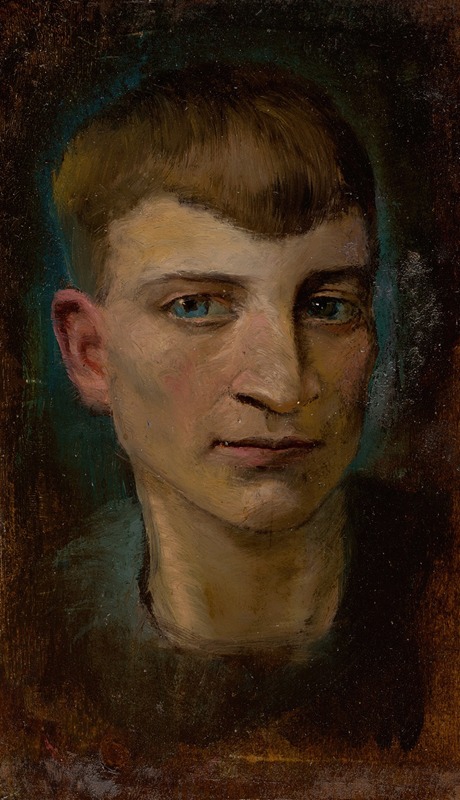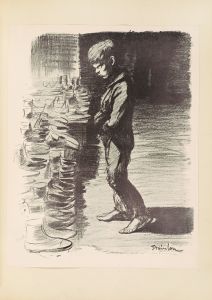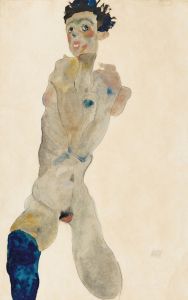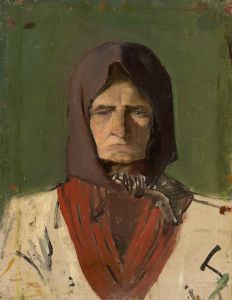
Head of Emaciated Boy
A hand-painted replica of Ladislav Mednyánszky’s masterpiece Head of Emaciated Boy, meticulously crafted by professional artists to capture the true essence of the original. Each piece is created with museum-quality canvas and rare mineral pigments, carefully painted by experienced artists with delicate brushstrokes and rich, layered colors to perfectly recreate the texture of the original artwork. Unlike machine-printed reproductions, this hand-painted version brings the painting to life, infused with the artist’s emotions and skill in every stroke. Whether for personal collection or home decoration, it instantly elevates the artistic atmosphere of any space.
Ladislav Mednyánszky was a Hungarian painter known for his expressive and often somber works, which frequently depicted the marginalized and the suffering. One of his notable works is "Head of Emaciated Boy," a painting that exemplifies his focus on human emotion and the struggles of life.
Mednyánszky was born on April 23, 1852, in Beckov, which was then part of the Kingdom of Hungary. He came from an aristocratic family, which afforded him the opportunity to study art in various European cities, including Munich and Paris. His education and travels exposed him to different artistic movements and styles, but he maintained a unique approach that often centered on the human condition.
"Head of Emaciated Boy" is a poignant example of Mednyánszky's ability to capture the essence of human suffering. The painting focuses on the face of a young boy, whose gaunt features and hollow eyes convey a deep sense of hardship and deprivation. Mednyánszky's use of color and brushwork in this piece is particularly notable; he employs a muted palette that enhances the somber mood of the painting. The background is often understated, drawing the viewer's attention directly to the boy's face, which is rendered with a high degree of realism and emotional depth.
Mednyánszky's work often reflected his personal experiences and observations. During his lifetime, he witnessed significant social and political changes, including the Austro-Hungarian Compromise of 1867 and the subsequent transformations within the empire. These events, along with his personal travels and encounters with people from various walks of life, influenced his artistic vision. He was particularly drawn to themes of poverty, suffering, and the transient nature of life, which are evident in many of his works, including "Head of Emaciated Boy."
The painting is a testament to Mednyánszky's skill in portraying the raw and unfiltered emotions of his subjects. His approach was not merely to depict physical likeness but to delve into the psychological and emotional states of the individuals he painted. This focus on the inner life of his subjects sets Mednyánszky apart from many of his contemporaries and contributes to the enduring impact of his work.
"Head of Emaciated Boy" is part of Mednyánszky's broader oeuvre, which includes landscapes, portraits, and genre scenes. Despite his aristocratic background, he often chose to depict the lives of the poor and disenfranchised, earning him a reputation as a painter of the people. His works are characterized by a deep empathy and understanding of human suffering, which continue to resonate with audiences today.
Mednyánszky's legacy is preserved in various collections and museums, particularly in Hungary and Slovakia, where his work is celebrated for its emotional depth and technical mastery. "Head of Emaciated Boy" remains an important piece within his body of work, exemplifying his commitment to exploring the complexities of human emotion and the often harsh realities of life. Through this painting, Mednyánszky invites viewers to confront the difficult truths of existence, encouraging a deeper understanding and compassion for those who endure hardship.

















![There Is Something beneath the Sackcloth, i.e. You Can’t Judge a Man by His Clothes [The Men in Sacks]](/imgs/264663/s/francisco-de-goya-there-is-something-beneath-the-sackcloth-ie-you-cant-judge-a-man-by-his-clothes-the-men-in-sacks-eaec9eed.jpg)